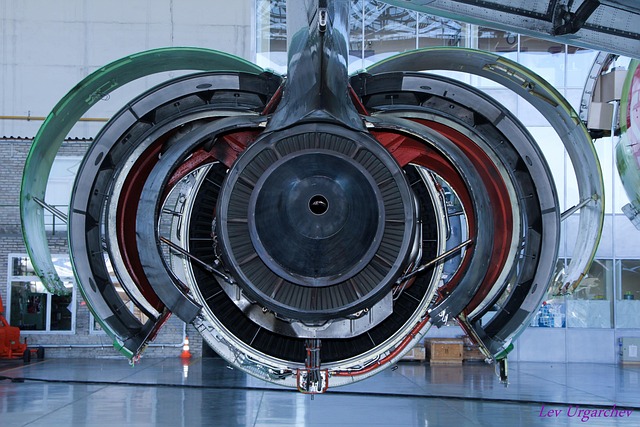
From Farmers to Factories: Who Really Subsidises Who?
The intricate relationship between agriculture and industry forms the cornerstone of modern economies, influencing everything from food availability to employment rates. Both sectors rely on each other for survival, yet the dynamics of their interdependence often provoke debate over who truly subsidises whom. This article will explore the complex layers of this relationship, diving into the issues surrounding agricultural subsidies, industrial dependencies on agricultural products, and the economic implications of these interactions.
The Landscape of Subsidies
A subsidy is essentially a form of financial assistance given by the government to support a specific economic sector or activity. In the realm of agriculture, subsidies are used to stabilize farmers’ incomes, control food production, and ensure food security. Governments around the world allocate billions of dollars to agricultural subsidies, leading to the question of whether it’s farmers who are subsidised by factories, or if it’s the other way around.
Traditionally, farmers have been shielded from the full impact of market forces through government intervention. These subsidies can take various forms, including direct payments, crop insurance, and price supports. The intention is to provide a safety net that protects farmers against unpredictable weather, fluctuations in global markets, and rising production costs. However, the transparency of these subsidies often obscures who benefits most in this cycle.
Who Benefits from Agricultural Subsidies?
Agricultural subsidies are seen as a positive lifebuoy for farmers struggling in a volatile market. However, they also attract criticism, mainly concerning their effectiveness and the beneficiaries of the funds. Critics argue that a significant portion of these subsidies ends up benefiting large agribusinesses rather than small family farms, leading to increased consolidation of the farming industry.
For example, large corporations often have the resources to navigate the bureaucratic landscape of subsidy applications, turning the well-intentioned policy into a fight for financial survival for smaller entities. Thus, one may argue that while subsidies are ostensibly directed towards farmers, they often inadvertently end up strengthening large factories and commercial farming entities that can leverage these funds for substantial profit.
Interaction Between Agricultural and Industrial Sectors
The industrial sector, particularly the food processing and manufacturing industries, relies heavily on agricultural products. This dependency creates a complex relationship that complicates the narrative regarding who subsidises whom. While farmers may receive government support, food processors and manufacturers benefit from the consistent supply of agricultural produce. This relationship sets the stage for an intriguing juxtaposition.
Consider the situation in which farmers produce an essential crop, say wheat. If the government subsidises wheat production, farmers have more financial support and are incentivised to plant more wheat. This leads to an increase in supply, which lowers market prices. Food manufacturers, in turn, purchase wheat at lower prices, increasing their profitability while often paying farmers less for their product than they would in an unregulated market.
The Price of Dependency
This dynamic presents a conundrum. On one hand, subsidies are designed to support farmers, but on the other hand, they can set the stage for dependency on industrial buyers. The situation can lead to a power imbalance, where the larger industrial actors dictate prices and terms, potentially squeezing smaller farmers out of the market.
Moreover, the agricultural system often becomes reactive to industry needs, incentivising certain crops over others, which can leave farmers vulnerable when market demands shift. With their livelihoods depending on a select few cash crops, farmers may find themselves in a precarious financial situation, especially if the industrial sector decides to shift its focus elsewhere.
Global Examples and Implications
The effects of agricultural subsidies and the resulting dynamics can be observed globally. For instance, in the United States, the Farm Bill is a massive piece of legislation that determines the scope and scale of agricultural subsidies. Critics of the system argue that the bill disproportionately advantages large agribusinesses, leading to environmental degradation, decreasing biodiversity, and a focus on monocultures. Overall, the notion is that while farmers are labelled as beneficiaries, much of the financial support goes to industrial models rather than sustainable agricultural practices.
In Europe, the Common Agricultural Policy (CAP) has similarly drawn criticism for creating dependency and favouring large farming operations. In both cases, the idea is less about the farmers themselves and more about the relationships those farmers have with industrial entities and the government.
Sustainability: A Twisted Narrative
The agricultural-industrial relationship also raises questions about sustainability. In an era where climate change is a pressing issue, the current agricultural practices promoted by both subsidies and industrial demand can be counterproductive. Monoculture farming, incentivised by subsidies, often results in soil degradation, loss of biodiversity, and increased reliance on chemical inputs.
Conversely, sustainable farming practices, which are not always promoted through existing government policies, may require initial higher investments. In this light, while subsidies are intended to support farmers, they do not always stimulate sustainable practices. If factories are seen as the ultimate beneficiaries of a farming system that prioritises economic over ecological sustainability, the whole model becomes questionable.
The Role of Policy and Future Directions
Considering the complexities of who subsidises whom, it’s clear that policy reform could pave the way for a more equitable and sustainable agricultural system. Adjustments to subsidy structures can encourage sustainable practices, support small to medium-sized farms, and create a more balanced market. Governments have an opportunity to place value on ecological health, promoting agricultural methods that satisfy environmental and economic goals.
New policies could focus on rewarding farmers who engage in sustainable practices, implementing tiered subsidy systems that favour smaller producers or those who meet environmental standards. In doing so, the government can reshape its role from a mere facilitator of trade and industry, to a steward of the land who nurtures both the agricultural and industrial sectors.
Conclusion
The relationship between agriculture and industry is a multifaceted one that reveals deep economic ties. These systems are not easily separable, and understanding the nuances of who subsidises whom leads to significant insights about policy and sustainable practice moving forward. The ultimate goal should be a balanced approach where both farmers and factories thrive, grounded in a commitment to environmental sustainability and equitable practices.
As economies evolve, so too must their support structures. For a truly sustainable future, it is imperative to rethink subsidies and policies that create a more collaborative cycle between farmers and factories. In doing so, we can pave the way for a more promising agricultural landscape that benefits both the economy and the planet.



